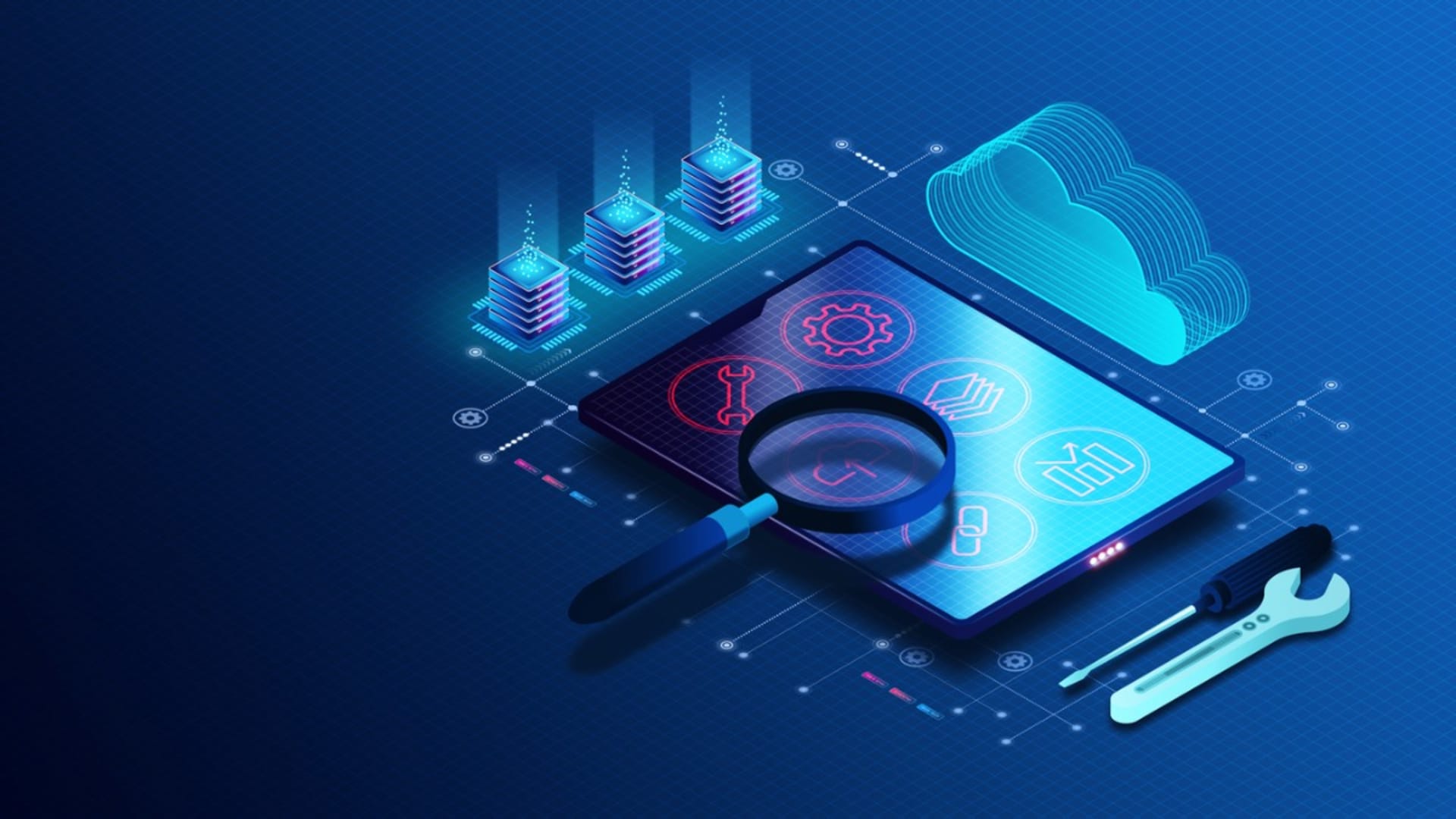As the tech world becomes increasingly dependent on big data analytics, the effectiveness of distributed architectures makes it easier to process a large amount of data—without relying on too many computing resources.
Big data frameworks like Hadoop, web servers, and blockchain make the most of distributed systems. The transition from monolithic systems has helped modern-day tech companies unlock the massive potential seeded in modularity, decoupling services, and distributed systems.
Here, we’ll discuss the fundamental and advanced concept of distributed systems.
Basics of Distributed Systems
Let’s start by exploring the fundamentals of distributed systems. including the definitions, advantages, and challenges.
What Is a Distributed System?
A distributed system is essentially a network of autonomous computer systems that, although physically distant, are connected to a centralized computer network driven by distributed system software. The autonomous computers are responsible for sharing the requested resources and files over a communication network and perform the tasks assigned by the centralized computer network.
The key components of a distributed system are:
- Primary system controller: This is the controller that tracks everything in a distributed system and facilitates server request dispatch and management across the system.
- Secondary controller: The secondary controller acts as a process or communication controller that regulates and manages the flow of server requests and the system’s translation load.
- User-interface client: Managing the user end of the distributed system, a user-interface client provides important system information related to control and maintenance.
- System datastore: Each distributed system comes with one data store that is used to share data across the system. The data can be stored on one machine or distributed among devices.
- Relational database: A relational database stores all the data and allows multiple users in the system to use the same information simultaneously.
Why Use Distributed Computing Systems?
Distributed computing systems find their applications in the following industries across the world.
| Industries | Companies and Applications |
| Finance and e-commerce | Amazon, eBay, online banking, eCommerce websites |
| Cloud technologies | AWS, Salesforce, Microsoft Azure, SAP |
| Healthcare | Health informatics, maintaining online patient records |
| Transport and logistics | GPS devices, Google Maps application |
| Information technology | Search engines, Wikipedia, social networking websites, cloud computing |
| Entertainment | Online gaming, music apps, YouTube |
| Education | E-learning |
| Environment management | Sensor technologies |
There are several advantages to using distributed computing systems. Here are some of the most important pros you should know:
Scalability
Distributed computing systems are highly scalable, enabling horizontal scaling. You can add more computers to the network and operate the system through multiple nodes. In other words, scalability makes it easier to cater to increasing computational workloads, consumer demands, and expectations.
Redundancy
In distributed systems, we often come across the concept of redundancy, which allows the system to duplicate critical components, resulting in a significant increase in reliability and resilience. With redundancy, distributed systems can make backups and operate when a few computational nodes fail to function.
Fault tolerance
Distributed systems are fault-tolerant by design. This is because these scaled-out systems typically still function even if one of the nodes goes down. The computational workload is equally distributed among the remaining functional nodes.
Load balancing
Adding a load balancer device or load balancing algorithm to the distributed system makes it easier to prevent system overload. The load-balancing algorithm seeks the least busy machine and distributes the workload accordingly.
Challenges of Distributed Systems
What are some of the key challenges of distributed systems? Here are the issues you may encounter when working with these systems.
- Network latency: There can be significant latency in communication. This is because the system is distributed and involves several components working together to manage different requests. This can cause performance issues across the system.
- Distributed coordination: A distributed system needs to coordinate among the nodes. Such extensive coordination can be quite challenging, given how distributed the entire system is.
- Security: The distributed nature of the system makes it vulnerable to data breaches and external security threats. This is one reason why centralized systems are sometimes preferred over distributed systems.
- Openness: Since a distributed system uses components with multiple data models, standards, protocols, and formats, achieving effective and seamless communication and exchange of data between the components without manual intervention is quite challenging. This is especially true if we consider the sheer amount of data processed through the system.
Other challenges you may encounter when using a distributed computing system are heterogeneity, concurrency, transparency, failure handling, and more.
Key Concepts in Distributed Architecture
Here are some of the concepts that are important for the seamless functioning of a distributed architecture:
Nodes and Clusters
A node is a single or multiprocessor network that possesses memory and I/O functions driven by an operating system. A cluster, on the other hand, is a group of two or more nodes or computers that function simultaneously or in parallel in order to complete the assigned task.
A computer cluster makes it possible to process a large workload by distributing the individual tasks among the nodes in the cluster, leveraging the combined processing power to boost performance. Cluster computing ensures high availability, load balancing, scaling, and high performance.
Data Replication and Sharding
Data replication and sharding are two ways data is distributed across multiple nodes. Data replication is essentially keeping a copy of the same data on multiple servers to significantly minimize loss of data. Sharding, also called horizontal partitioning, distributes large database management systems into smaller components to facilitate faster data management.
With these data distribution tactics, it’s more feasible to resolve scalability issues, ensure high availability, speed up query response time, create more write bandwidth, and conduct horizontal scaling. Data replication allows a reduction in latency, increases availability, and helps scale out the number of servers.
Load Balancing
An effective distributed system relies heavily on load balancing. This key concept of distributed architecture facilitates the optimal distribution of traffic across the nodes in a cluster, resulting in performance optimization without causing any system overload.
With load balancing, the system can simply eliminate the need to assign a disproportionate amount of work to a single node. Load balancing is enabled by adding a load balancer and a load balancing algorithm that periodically checks the health of each node in the cluster.
If a node has failed, the load balancer will promptly reroute incoming traffic to the functional nodes.
Fault Tolerance and Failover Strategies
Since a distributed system needs several components to function properly, it should be highly fault tolerant. After all, multiple components in a system can result in multiple faults, causing significant performance degradation. A fault-tolerant distributed system is readily available, reliable, safe, and maintainable.
Fault tolerance in distributed systems is ensured through phases like fault detection, fault diagnosis, evidence generation, assessment, and recovery. The high system availability in a distributed computing architecture is maintained through failover strategies.
Failover clustering, for instance, ensures high availability by creating a cluster of servers. This allows the system to function even if one server fails.
Advanced Topics in Distributed Architecture
Now, let’s look at some more advanced topics in distributed architecture.
CAP Theorem
The CAP theorem or the CAP principle is used to explain the competencies of a distributed system related to replication. Through CAP, system designers work their way through the potential trade-offs while designing distributed networks. CAP stands for Consistency, Availability, and Partition Tolerance—three desirable properties of a distributed system.
The CAP theorem states that a distributed system cannot have all three desirable properties at the same time. A shared data system can showcase only two of these desirable properties.
Service-Oriented Architecture (SOA)
Service-oriented architecture (SOA) is a design pattern for distributed systems enabling service extension to other applications through the set service communication protocol. The services in SOA are loosely coupled, location-transparent, and self-contained and support interoperability,
Service-oriented architecture contains two aspects: functional aspect and quality of service. The functional aspect of SOA entails service request transport, service description, the actual service, service communication protocol, business process, and service registry.
The quality of service aspect of SOA contains transaction, management, and a policy or set of protocols for identification, authorization, and service extension. SOA is easy to integrate, platform-independent, loosely coupled, highly available, and reliable and allows parallel development in a layer-based architecture.
Distributed Databases
Used primarily for scaling out, distributed database systems are designed to conduct the assigned tasks and meet the computational requirements without having to disrupt or change the database application.
A well-designed distributed database system can effectively make the system more available and fault-tolerant while resolving issues related to throughput, latency, scalability, and more. It facilitates location independence, distributed query processing, seamless integration, network linking, transaction processing, and distributed transaction management.
Case Studies
Now, let’s take a look at some case studies related to the high-level implementation of distributed systems.
Netflix: A Real-world Example
Netflix is a classic use case of a high-level distributed system architecture that functions on AWS and Open Connect clouds. The backend of Netflix enables new content onboarding, video processing, and effective data distribution to servers located across the world. These processes are backed up by Amazon Web Services.
Netflix uses an elastic load balancer (two-tier load-balancing scheme) to route the traffic to front-end services. The microservice architecture of Netflix shows how the application runs on a collection of services that power the APIs for applications and web pages. These microservices cater to the data requests arriving at the endpoint and can communicate with other microservices to request the data.
Google’s Distributed Systems
Google’s search engine works on a distributed system because it has to support tens of thousands of requests every second. The requests trigger databases that have to read and supply hundreds of megabytes while using billions of processing cycles.
Google starts load balancing the moment an internet user types a query, searching for the closest active cluster from the user’s location. The load balancer transfers the requests to the Google Web Server while GWS creates a response in HTML format.
The entire distributed system is driven by three components: a Googlebot or web crawler, an Indexer, and a Docserver.
Conclusion
A distributed system, regardless of its complexities, is quite popular because it extends high availability, fault tolerance, and scalability. Although there are several significant challenges associated with them, the future of distributed systems and their application is quite promising as technology advances.
Emerging technologies, like cluster computing, client server architectures and grid computing, are revolutionizing distributed systems as we speak. Moreover, the emergence of pervasive technology, ubiquitous computing, mobile computing, and the use of distributed systems as a utility is bound to change the existing distributed system architecture.
FAQ
How do distributed systems handle failures?
Distributed systems handle failures through data replication, node replacement using automated scripts or manual intervention, retry policy to shorten recovery time for intermittent failures, the use of caches as a fallback to store data for repeated requests, effective load balancing, and more.
Why is data consistency a challenge in distributed systems?
Data consistency is a major challenge in distributed systems because issues like network delays, failures, and others can disrupt data synchronization and updates. Data consistency suffers in distributed systems due to concurrency and conflicts rising when multiple nodes request modification access to the same data. Moreover, fault tolerance, data replication, and data partitioning can also inhibit data consistency.
Are distributed systems more expensive to maintain?
A distributed system makes the most of a scaled-out architecture comprising multiple components like servers, storage, networks, and more. The more parts a system has, the greater the likelihood that it will break down. Distributed systems are complex in nature, and building and maintaining them can be quite skill and cost-intensive.
How does load balancing enhance the performance of distributed systems?
Load balancing plays a crucial role in ensuring the seamless functioning of distributed system architectures, and is particularly vital in the realm of parallel computing. In a parallel computing environment, multiple processors or nodes work concurrently to solve a problem, which necessitates an effective mechanism to distribute the computational load evenly.
Load balancing, in conjunction with a robust load-balancing algorithm, fulfills this requirement by ensuring that the traffic and computational tasks are equally distributed among the available nodes. This not only helps in preventing any single node from becoming a bottleneck, due to system overload, but also optimizes overall performance, leading to more efficient and faster execution of parallel processes.






